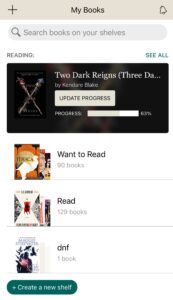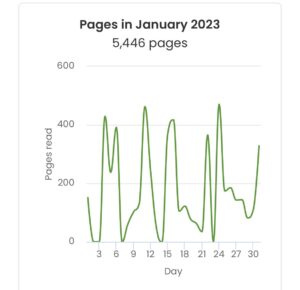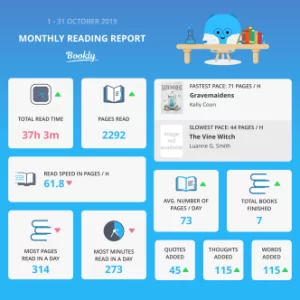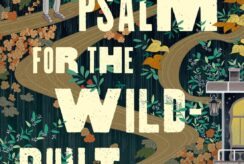Reading Hacks Part 1
By Jay Flood
It is constantly proven that reading has many benefits for your mind, body, and overall lifestyle. But reading consistently for your own pleasure can be one of the hardest habits to build and maintain. There are plenty of reasons, but there are ways to make reading fun, easier, and feel rewarding. For the first installment of a three-part series of “reading hacks,” I’m going to give you three apps that allow you to track and organize your reading habits.
Goodreads
Goodreads is probably the most-known app for readers. It functions as a sort of social media for readers because you can follow your friends and see what they’re reading. When looking at books, you can see if any of your friends have read it, reviewed it, or marked it as “want to read.” On Goodreads, you can see reviews posted by other Goodreads members, the average rating of the book, and other information about the book itself. Once you’ve finished a book, you can rate it and write a review if you want. You can also search authors and see all of the books they’ve published. Goodreads can also give recommendations for books in certain genres or based on books you’ve read.
There are three bookshelves automatically to organize your books: Want to Read, Currently Reading, and Read. When you mark a book as “currently reading,” you can update your progress by tracking what page you’re on. It can be motivating to know you’re 60% done with a book. You can also set a reading goal for the year, which is also motivating because it’s rewarding to see yourself get closer and closer to that goal and it’s even more rewarding when you reach it. Goodreads is also just helpful when you can’t remember which books you’ve read or were wanting to read. Although there are already three bookshelves when you create your account, you can add more bookshelves. For example, if you’re a mood reader and you want to separate the books you want to read into genres, you can create different bookshelves based on each genre. If you want to organize books you’ve already read based on the rating you gave it, you can do that too. You can create any bookshelf you want to organize your books.
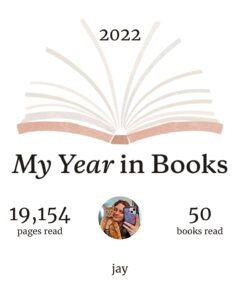
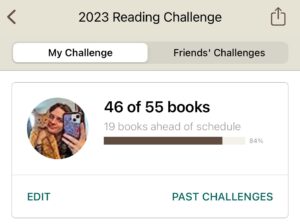
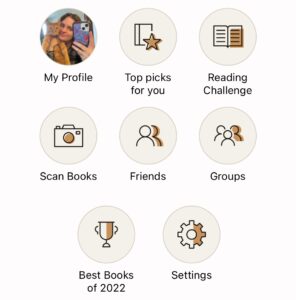
Storygraph
Storygraph does everything Goodreads does, except it’s not as popular as Goodreads is. However, Storygraph is my favorite app. I am a bit nerdy and love seeing statistics. Storygraph gives reading stats and allows you to view them by month, year, or all time. Like Goodreads, Storygraph will tell you how many books and pages you have read. However, it will also give you charts and graphs of the moods, pace, page number, fiction/nonfiction, genres, tags, format, most read authors, languages, the number of books and pages, and star ratings of the books you’ve read. I love seeing all of those statistics, but my favorite thing is seeing how many pages I’ve read each day during a good reading month.
I wish that Storygraph and Goodreads would combine because I like certain features from both, and there are certain things on both apps that could improve. For example, Storygraph is sort of clumpy with its software and it’s not as easy to navigate as Goodreads. However, Goodreads has been abandoned and hasn’t really had any updates since Amazon bought it. Goodreads crashes a lot and doesn’t have all of the statistics that Storygraph has. If they combined into one app, I would be the happiest person alive.
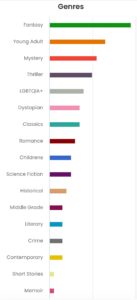
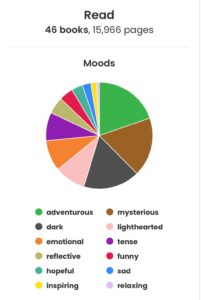
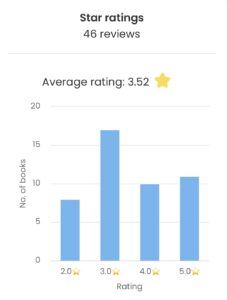
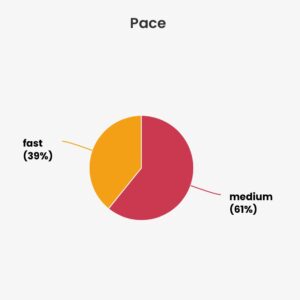
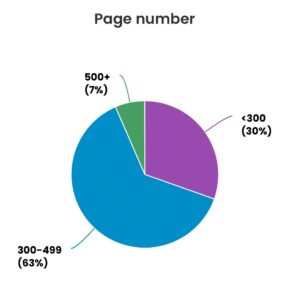
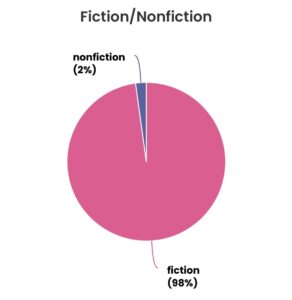
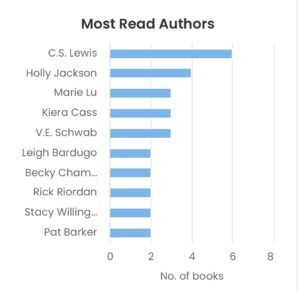
Bookly
I actually don’t have this app, but I know friends who use it and love it. This app allows its users to track the amount of time you read for. So if your goal is to read 30 minutes everyday, you can start the time on the app and read for 30 minutes. It’s a way to ensure you stick to that goal everyday and have proof. At the end of a month, you get a reading report that shows statistics on your reading habits. I get distracted easily and tend to read on and off, which is why this app isn’t beneficial for me. But for those who want to track how long they read for, this app is perfect.
Remember when you were a kid and your teachers had reading charts? You’d track how long you read for or how many books you read and there would be some sort of reward at the end? But a lot of the time, it was rewarding just to see how many books you read or how long you read for. The visualization of progress is motivation itself. Having these apps can also turn reading into a game, which for some might be stressful but for others it makes it fun. I am competitive, so turning reading into a game makes it easier for me to read and reach my goals.
